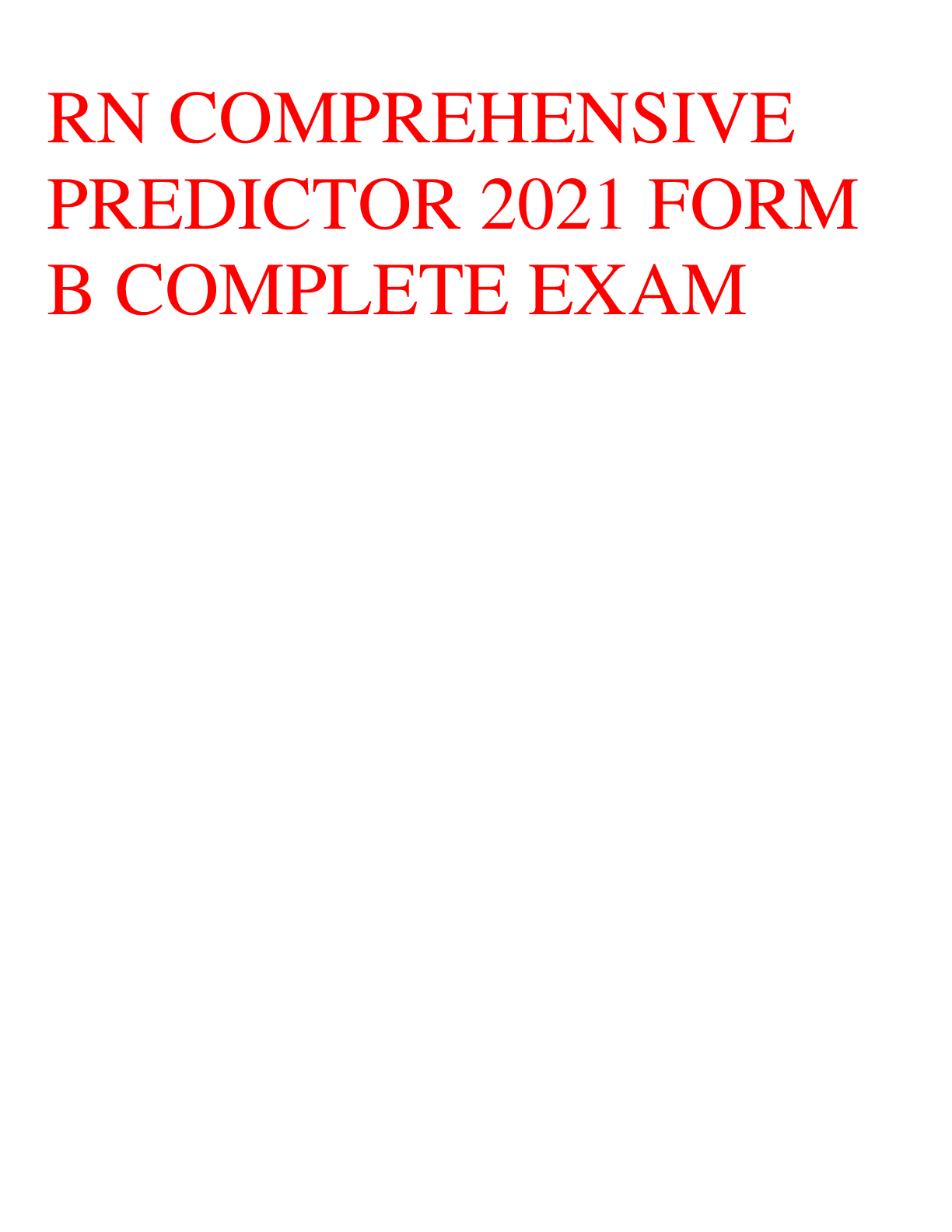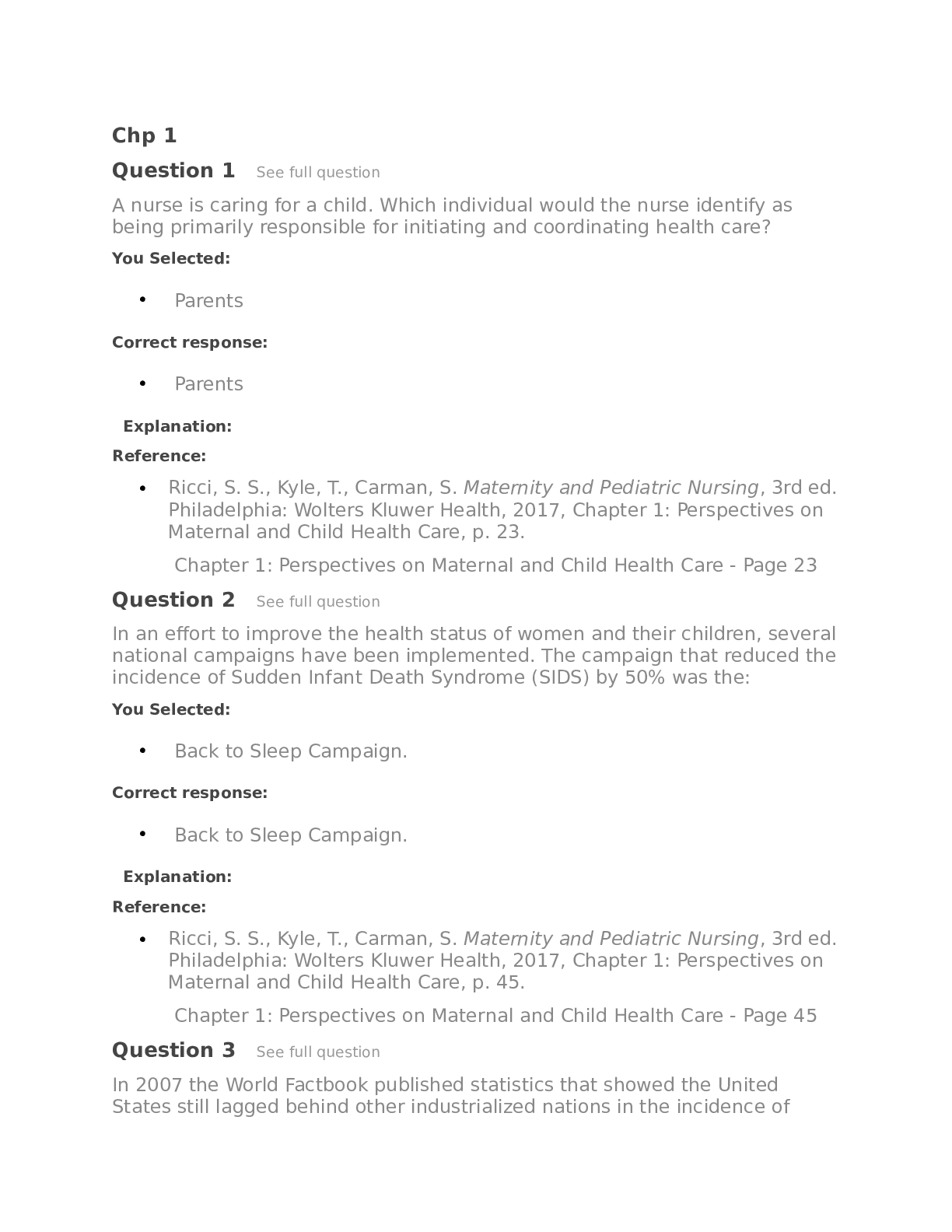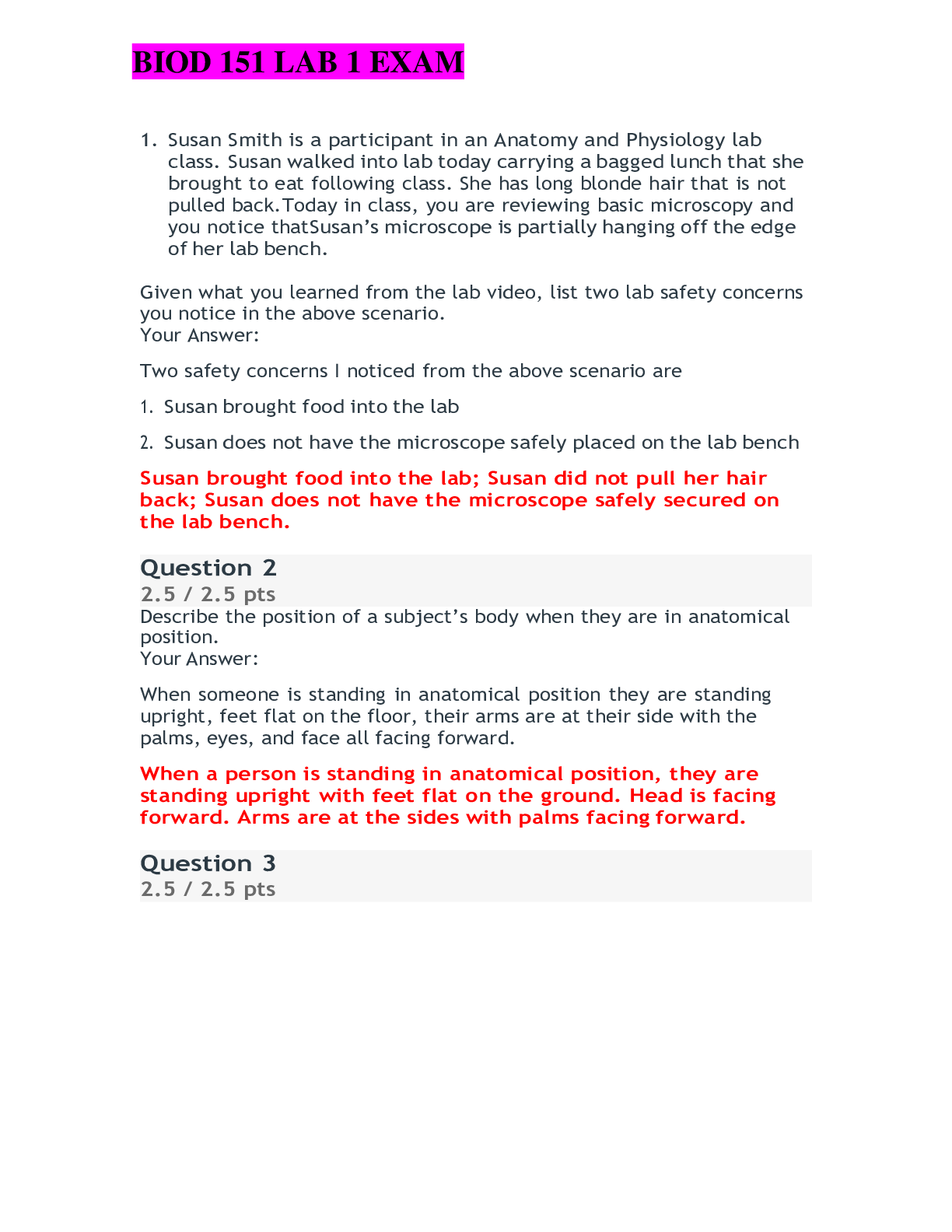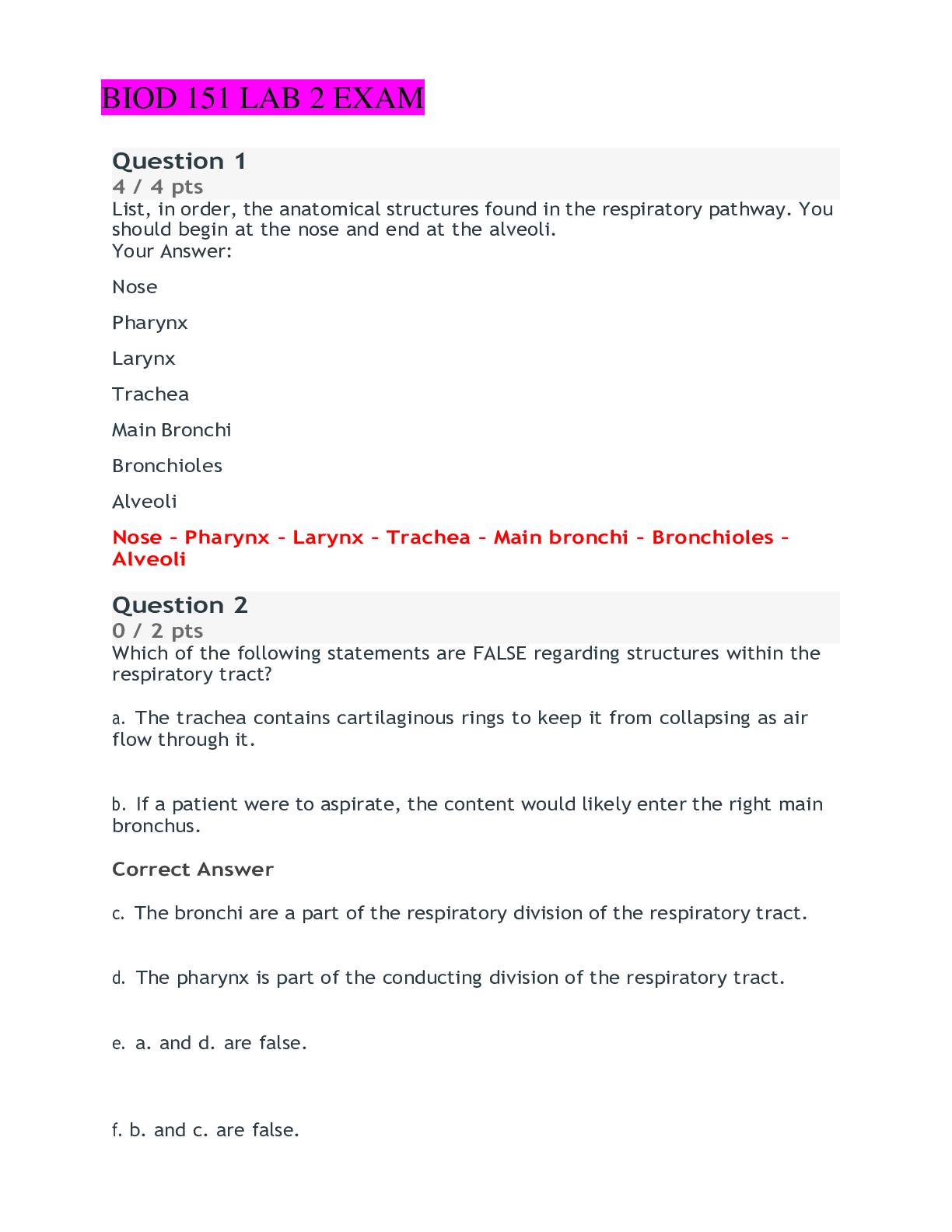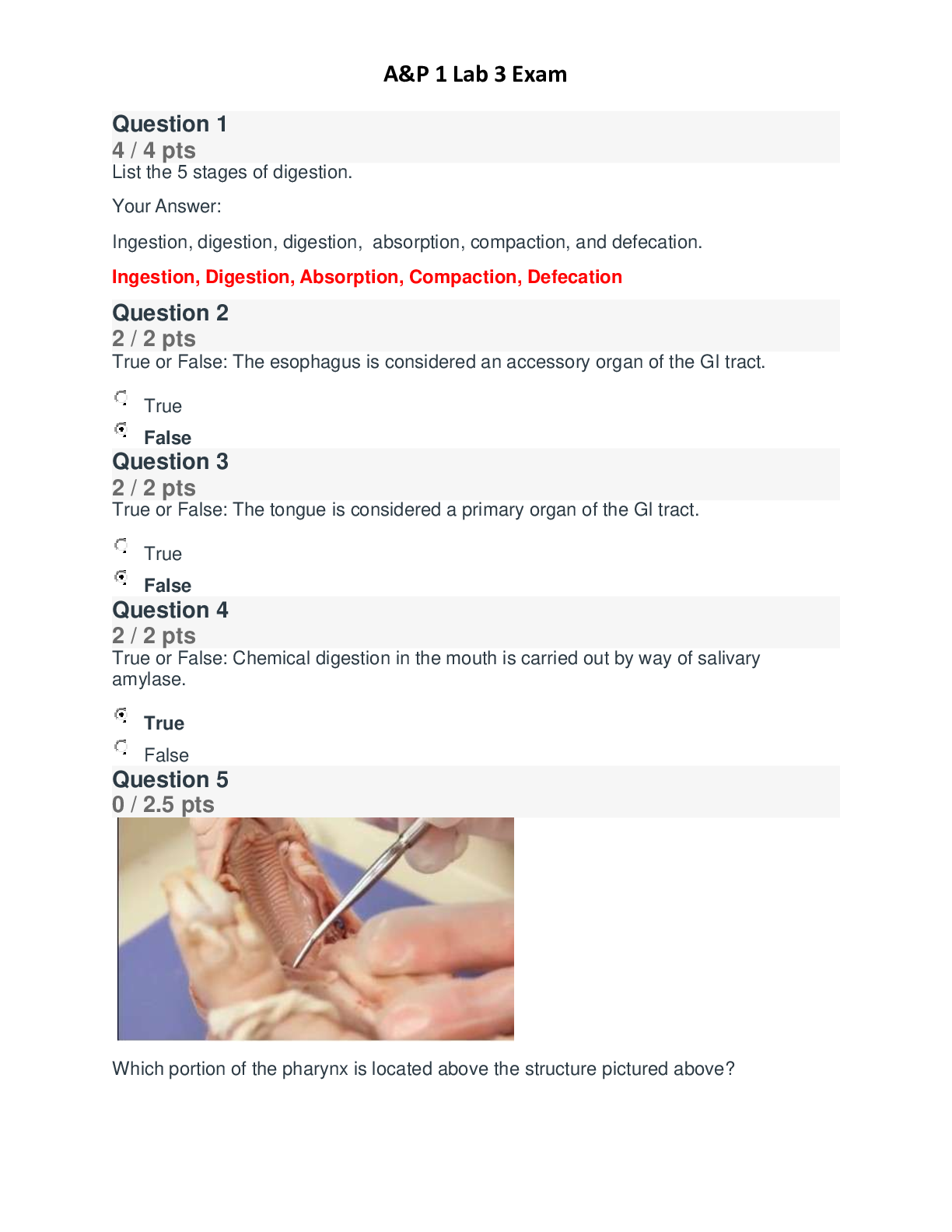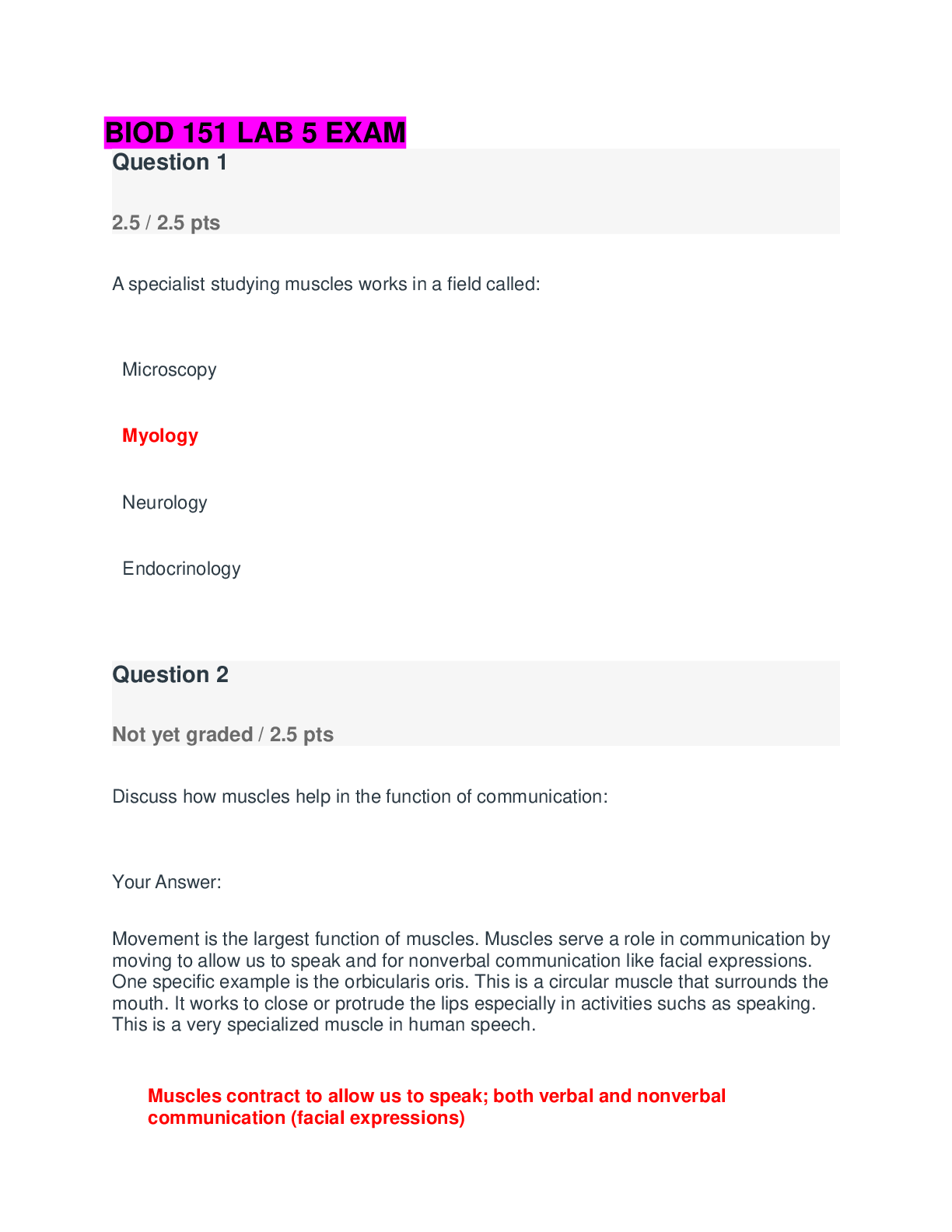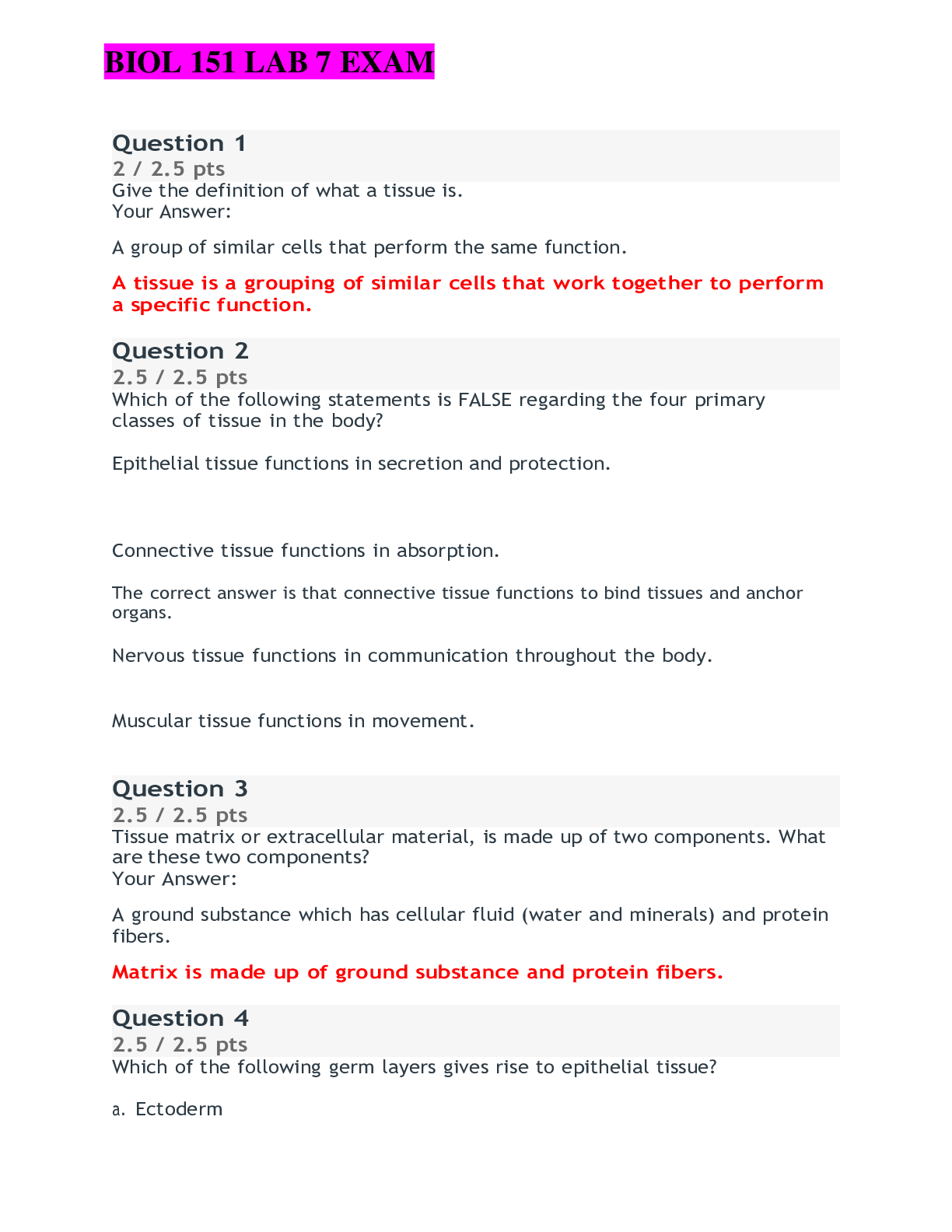Social Sciences > QUESTIONS & ANSWERS > AIPMM CPM Certification Questions and Answers Rated A+ (All)
AIPMM CPM Certification Questions and Answers Rated A+
Document Content and Description Below
AIPMM CPM Certification Questions and Answers Rated A+ Product lifecycle stages ✔✔1. Introduction 2. Growth 3. Maturity 4. Decline Product manager ✔✔Product Managers investigate, select,... and drive the development of products for an organization, performing the activities or product mgmt. Product Marketing Manager ✔✔Act as the voice of customer to the rest of the product team and company. Business Model ✔✔Framework that describes the rationale of how an org. creates, delivers, and captures value Reasons for business model ✔✔Describe & classify businesses Explore opportunities Public reporting purposes Allows managers to focus on value creation Business Case ✔✔Supports planning & decision making - whether to buy, which product to bring to market, which vendor to choose, when to implement Captures reasoning for creating/enhancing Business cases are evaluated to ensure ✔✔1. Investment has value and importance 2. Project will be properly managed 3. Organization has capability to deliver the benefits 4. Resources are working on highest value opportunities 5. Projects with inter-dependencies are started in optimum sequence Levels of a product ✔✔1. Core - benefit 2. Actual - Product appearance - design, brand, packaging, quality, functionality 3. Extended product - Payment terms, delivery, warranty, Maintenance & care, on site service, education/training Characteristics of a service ✔✔intangible, perishable, variable, inseparable Product lifecycle phases ✔✔Conceive, plan, develop, qualify, launch, deliver, retire Name 5 key deliverables during product lifecycle and the phases they are important ✔✔Strategic plan, competitive analysis, market trends, MRD, business case, PRD, product roadmaps, marketing strategic plan, Beta program plan, launch plan, marketing plan, end of life plan Product lifecycle knowledge areas ✔✔Business, market, organization, product, customer Marketing objective for commercialization strategies ✔✔Introduction - Gain awareness Growth - Stress differentiation Maturity - Maintain brand loyaly Decline - Harvest and deletion Product ✔✔A good or service offered by an organization which affords a bundle of benefits both objective (physical) and subjective (image) to a user Goods ✔✔Goods marketing relates to selling physical products - durable and nondurable Service Goods ✔✔Rented goods services, owned-goods services, non-goods services; shared services (consolidated and shared services by different units within an organization - finance, HR, security) Types of consumer products ✔✔convenience product, shopping product, specialty product, unsought product, consumer product Service ✔✔Product that is not embodied in a physical good and that typically effects some change in another product, person, or institution (example: painted nails) 4 P's of Marketing ✔✔Product, Price, Place, Promotion 3 P's of Service ✔✔People, Process, Physical proof Product line ✔✔a group of closely related product items with similar attributes or target markets (iPhones) Fill considerations ✔✔Product attributes - fuel type, engine size, capacity, size Stretch considerations ✔✔Buying power, target customer Product line extension ✔✔the use of an established product brand name for a new item in the same product category. Product width/breadth ✔✔Number of different product categories offered by company Product depth ✔✔Number of product lines in each category Product length ✔✔Number of products offered in each product line Style lifecycle ✔✔Basic and distinct mode of expression; Once accepted, popularity will vary over time Fad lifecycle ✔✔Gain rapid acceptance, peak early, and decline quickly; attract limited market; novel that may not address basic needs Fashion lifecycle ✔✔Currently accepted or popular style; gains acceptance, peaks, then declines; tend to go in cycles with generations Diffusion of innovation model ✔✔innovators, early adopters, early majority, late majority, laggards Incremental innovation ✔✔Small advancement beyond what already exists Radicial/discontinuous/breakthrough innovation ✔✔Large changes to an existing landscape; redefines attributes of a product (ex. adding mobility to phone) Disruptive innovation ✔✔Creating value along a different dimension, disrupting incumbent companies and markets Boston Consulting Group Matrix ✔✔Evaluates market growth rate and relative market share - stars, question marks, cash cows, dogs Hold strategy ✔✔High market share/ low market growth; remain with current position (cash cows); maintain marketing effort Build strategy ✔✔Low market share/ high growth market; necessary for a question mark with potential to be a star. Harvest strategy ✔✔A corporate-level strategy through which a company seeks to gain shortterm profits while phasing out a product line or exiting a market; appropriate for weak products where sale is unavailable or there are high exit barriers Divest strategy ✔✔sell or phase out the business unit and use the resources elsewhere -- dogs; could be viable product, but not within our organization GE McKinsey Matrix ✔✔Evaluates product based on industry attractiveness and business position on high, medium, low scale Ansoff product-market expansion grid ✔✔Portfolio-planning tool for identifying company growth opportunities through market penetration, market development, product development, or diversification Market penetration strategy ✔✔For existing products and markets; using this strategy, company grows by increasing the sales of its current product lines to its existing markets without changing the product (example: baking soda) Market development strategy ✔✔New markets, existing products; a growth strategy that employs the existing marketing offering (product) to reach new market segments Product development strategy ✔✔Existing market, new product; a growth strategy that offers a new product or service to a firm's current target market Diversification strategy ✔✔New market and new product; a growth strategy whereby a firm introduces a new product or service to a market segment that it does not currently serve Porter's Generic Strategies ✔✔Looks at competitive scope and competitive advantage; cost leadership (Walmart), differentiation (Apple, Target), cost focus (Aldi), differentiation focus (Trader Joe's) Porter's Five Forces ✔✔Framework to evaluate attractiveness of market - Barriers (threat of entry), threat of substitute, supplier power, buyer power, and competitive rivalry SWOT analysis ✔✔strengths, weaknesses, opportunities, threats PEST analysis ✔✔political, economic, social, and technological Kotler's market strategies ✔✔Market leader, market challenger, market follower, market nicher cost-based pricing ✔✔setting prices based on the costs of producing, distributing, and selling the product plus a fair rate of return for effort and risk value-based pricing ✔✔a method of setting prices based on customer perceptions of value competitive based pricing ✔✔A pricing strategy based on what all the other competitors are doing. The price can be set at, above, or below competitors' prices. skimming pricing ✔✔a new product pricing strategy that aims to maximize profitability by offering new products at a premium price; recoup costs faster penetration pricing ✔✔setting a low initial price on a new product to appeal immediately to the mass market; used to build volume/share Neutral pricing ✔✔Price not to gain or restrict market share; price near or at competitors prices optional feature pricing ✔✔refers to the availability of optional products, features and services in addition to their standard product offering. (automobiles) product line pricing ✔✔"Stepped" price levels create an association of different quality levels two-part pricing ✔✔a price tactic that charges two separate amounts to consume a single good or service; low fixed fee to encourage initial purchase and a variable usage fee bundle pricing ✔✔the marketing of two or more products in a single package price By-product pricing ✔✔Setting a price for products that are by-products of other processes (example: compost) captive product pricing ✔✔setting a price level of ancillary products high and the main product low (example: razors and blades) Porter's Value Chain Model ✔✔Primary activities - inbound logistics, operations, outbound logistics, marketing and sales, service Outbound activities - Infrastructure, HR, Technology development, Procurement [Show More]
Last updated: 1 year ago
Preview 1 out of 11 pages
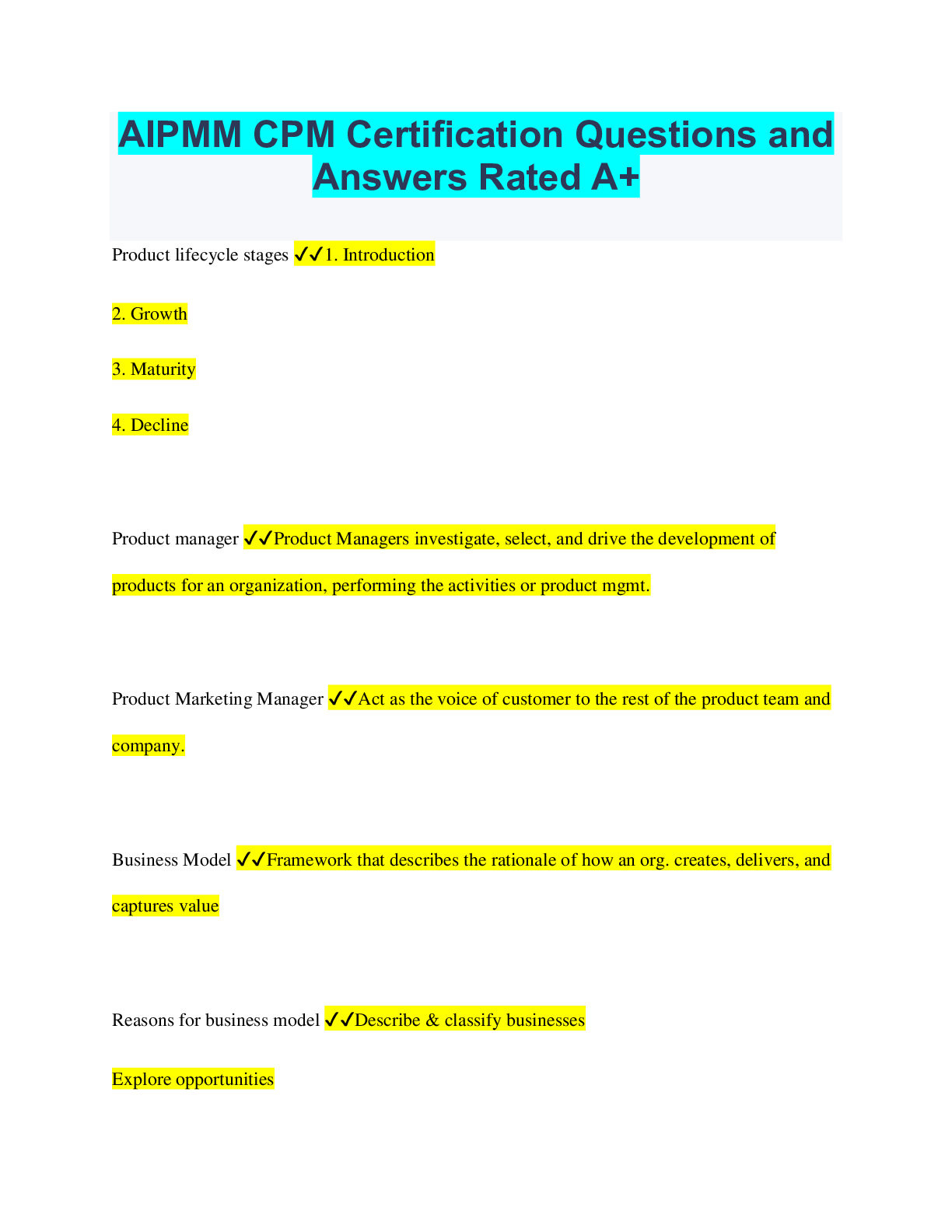
Buy this document to get the full access instantly
Instant Download Access after purchase
Add to cartInstant download
We Accept:

Also available in bundle (1)

AIPMM BUNDLED EXAMS QUESTIONS AND ANSWERS WITH VERIFIED SOLUTIONS
AIPMM BUNDLED EXAMS QUESTIONS AND ANSWERS WITH VERIFIED SOLUTIONS
By Nutmegs 1 year ago
$20
7
Reviews( 0 )
$10.00
Document information
Connected school, study & course
About the document
Uploaded On
May 07, 2023
Number of pages
11
Written in
Additional information
This document has been written for:
Uploaded
May 07, 2023
Downloads
0
Views
60

.png)
.png)
.png)
.png)
.png)
.png)
.png)
.png)
.png)
.png)
.png)

